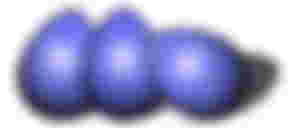
An Easter morning in the 1900s. Alexander III is contemplative. A pity for the minister. He inquired what the king's problem was. Never before had the minister met Alexander, the King of Russia. He wanted to know the problem because he saw the king sitting like this when there was no war or other attacks.
The king said; He wants to give his beloved an Easter gift. The king himself had found a solution. The king decided to give her an egg. Carl Faberg, a jeweler, was hired to make it. The egg shell he made was white and the inside was gold. The inside was filled with the shape of a golden rooster. Its eyes were like jewels.Inside the chicken was a small gold crown. That egg was so beautiful.
The king said that an egg should be made every year to give to the queen for Easter. Any method or model can be created. But the king said that every egg should contain something surprising.
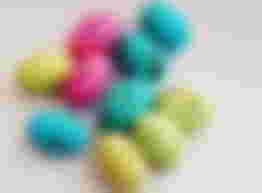
An amazing egg was made of solid silver. It had the Trans-Siberian Rain Rail. It was a design of the railway line. The stations were marked with precious gems. There was also a gold train inside. Other similar eggs were made by Faberg for the Russian royal family, especially as a gift to other kings. They were all very valuable. They are a great museum.
In Europe, Easter was celebrated with colorful eggs used for home decoration. In Eastern European countries, it was different. In countries such as Hungary and Romania, wooden eggs are beautifully painted in a variety of patterns. Those models had special names and meanings that helped to tell the story of Easter.
In some other countries, Easter was different. There was an 'egg discovery' competition. Eggs can be hidden around (inside) a house or garden. Kids need to figure it out. Sometimes they are told that the eggs are hidden by the Easter bunny.
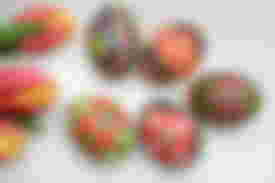
Egg-rolling competitions are held all over the world on Easter Monday. The eggs are laid down on a hill or slope. The winner will be the one whose egg reaches the bottom without breaking. In countries such as France, Germany, Norway, and Syria, egg-laying is practiced. It is played with boiled hard-boiled eggs. It can be described as a 'congress' game. The other eggs should hatch but look after their own eggs without hatching.The winner will be the one with the whole egg in hand at the end.
Like rabbits and wild rabbits, eggs and chicks are associated with Easter. This is because in pagan times they were seen as symbols of fertility and new life. The early Christians took up the thought or meaning of the new life. the reason,
It helped them to remember the resurrection, the new life, and the receiving of it through Christ. Today there are no wooden eggs or anything. Instead of chocolate eggs. They are very popular because they are good to eat tasty chocolate eggs.
If Christmas tastes like cake, Easter eggs are Easter delicacies. The history of the Easter egg is related to the resurrection of Christ. The oyster egg is a symbol of new life and hope, a victory over death and a return to life.
There are many beliefs associated with the oyster egg in many countries. In the United States and Canada, children are fascinated by the fact that rabbits, the oyster bunny, bring eggs.
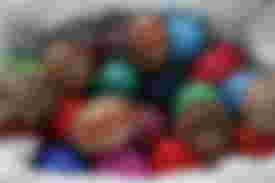
Ever since the 15th century, it has been customary in Britain to distribute eggs made with rice and sugar in the morning on Easter day after the morning prayer.
Oyster eggs began to become a ritual among the Christians of ancient Mozambique. Later it spread to other countries. Decorating egg shells as part of spring celebrations has been around for thousands of years. It is said that this later led to the Oyster Festival in the spring. On the morning of Easter Day, the family hides the eggs for the children.
Similarly, in some churches, oyster eggs are blessed and distributed to believers after Easter night ceremonies.
Inside the Easter egg ...
Oyster eggs are made in two ways. The traditional oyster egg is made by boiling chicken or duck eggs and garnishing them with dyes or stripes. Later, chocolate eggs and plastic eggs became popular. It is filled with candies or chocolates and wrapped in beautiful colored paper.
Red eggs are especially important in oyster eggs. Red eggs are made to commemorate the blood of Christ. Inside hollow eggs are also exchanged. This is to indicate the empty tombs after the resurrection of Christ.
In the early days, natural materials such as onion peel, beetroot and flowers were used to give color. Later it gave way to artificial colors. It is customary to give gifts to relatives and friends in European countries and elsewhere. The message of the oyster will also be recorded on top of the eggs.
Kids are fans of oyster eggs. For kids, there are also games like Oyster Egg Hunt, which finds hidden eggs. Oyster eggs are also used in various games such as egg rolling and egg dancing to add to the festivities.
If Christmas tastes like cake, Easter eggs are Easter delicacies. The history of the Easter egg is related to the resurrection of Christ. The oyster egg is a symbol of new life and hope, a victory over death and a return to life.'

There are many beliefs associated with the oyster egg in many countries. In the United States and Canada, children are fascinated by the fact that rabbits, the oyster bunny, bring eggs.
Ever since the 15th century, it has been customary in Britain to distribute eggs made with rice and sugar in the morning on Easter day after the morning prayer.
Oyster eggs began to become a ritual among the Christians of ancient Mozambique. Later it spread to other countries. Decorating egg shells as part of spring celebrations has been around for thousands of years. It is said that this later led to the Oyster Festival in the spring. On the morning of Easter Day, the family hides the eggs for the children. Some church like this after Easter night ceremonies
If you have liked this article, please....
Comment
up-vote
Like
Share and Subscribe
Thank you for reading
Great thanks @ TheRandomRewarder

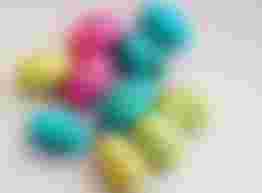



Beautiful one